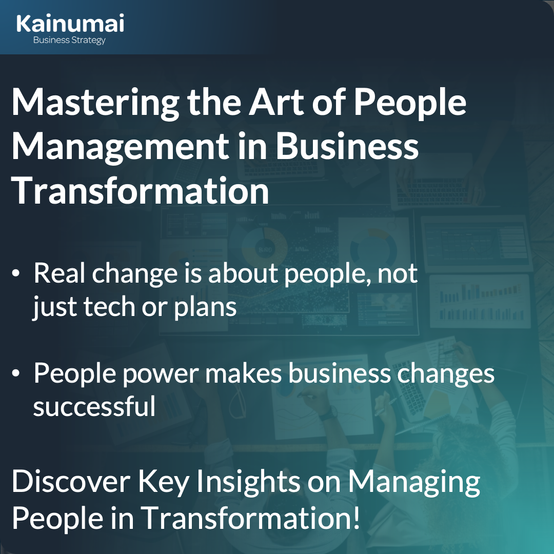The Secret Weapon in Business Transformation: Your Team
- thomas95800

- Apr 4, 2024
- 2 min read
Think technology is the main transformation driver? The human element cannot be overlooked.
In the whirlwind of buzzwords like "digital transformation" and "strategic innovation," there's a pivotal element often relegated to the sidelines: the human factor. It's easy to fall into the trap of viewing business transformation through the lens of technology and strategic frameworks alone. But at its heart, every organizational change is a human endeavor. Today, I'm diving deep into why people—not just processes or tools—are central to the success of any business transformation.
The Human Element in Transformation
Change, by its very nature, brings uncertainty and resistance. It's a human instinct to cling to the familiar, especially in the workplace where stability is often equated with security. Successful business transformation initiatives understand and address these human emotions. They recognize that the key to unlocking true potential lies not in the latest technology or the most comprehensive strategic plan, but in the people who will bring these to life.
Leadership and Empathy
The role of leadership in business transformation cannot be overstated. Leaders who approach change with empathy, who listen and genuinely address concerns, pave the way for a culture that embraces transformation. Empathetic leadership is about understanding the journey from the employee's perspective, offering support, and guiding them through the uncertainties of change. This approach not only mitigates resistance but also cultivates an environment of trust and openness, essential ingredients for innovation.
Communication as a Pillar
Clear, transparent communication forms the backbone of successful transformation. It's not just about relaying information; it's about creating a dialogue. Employees need to understand the "why" behind the change, how it benefits the organization, and, importantly, what it means for them. Open channels for feedback allow for the flow of ideas and concerns, making employees feel valued and involved in the transformation process. This level of engagement is crucial for fostering a sense of ownership and commitment to change.
Training and Support Systems
Investing in employee development is a clear signal that an organization values its people. Adequate training and support systems not only equip employees with the necessary skills for the new direction but also demonstrate a commitment to their growth and success within the transformed business. Cultivating a culture where mistakes are viewed as learning opportunities encourages experimentation and innovation, key drivers of successful transformation.
Measuring Success Beyond Metrics
While financial performance and operational efficiency are important indicators of transformation success, they don't tell the whole story. The human impact of transformation efforts—employee engagement, morale, and the overall culture shift towards embracing change—also needs to be measured and valued. These less tangible metrics are often the true indicators of long-term success and sustainability of the transformation efforts.
Conclusion
As we navigate the complexities of business transformation, let's not lose sight of the human element. It's the people who make any change possible and sustainable. Leaders who recognize and prioritize this will not only achieve their transformation goals but also build a resilient, innovative, and engaged workforce ready to face future challenges.


















Comments